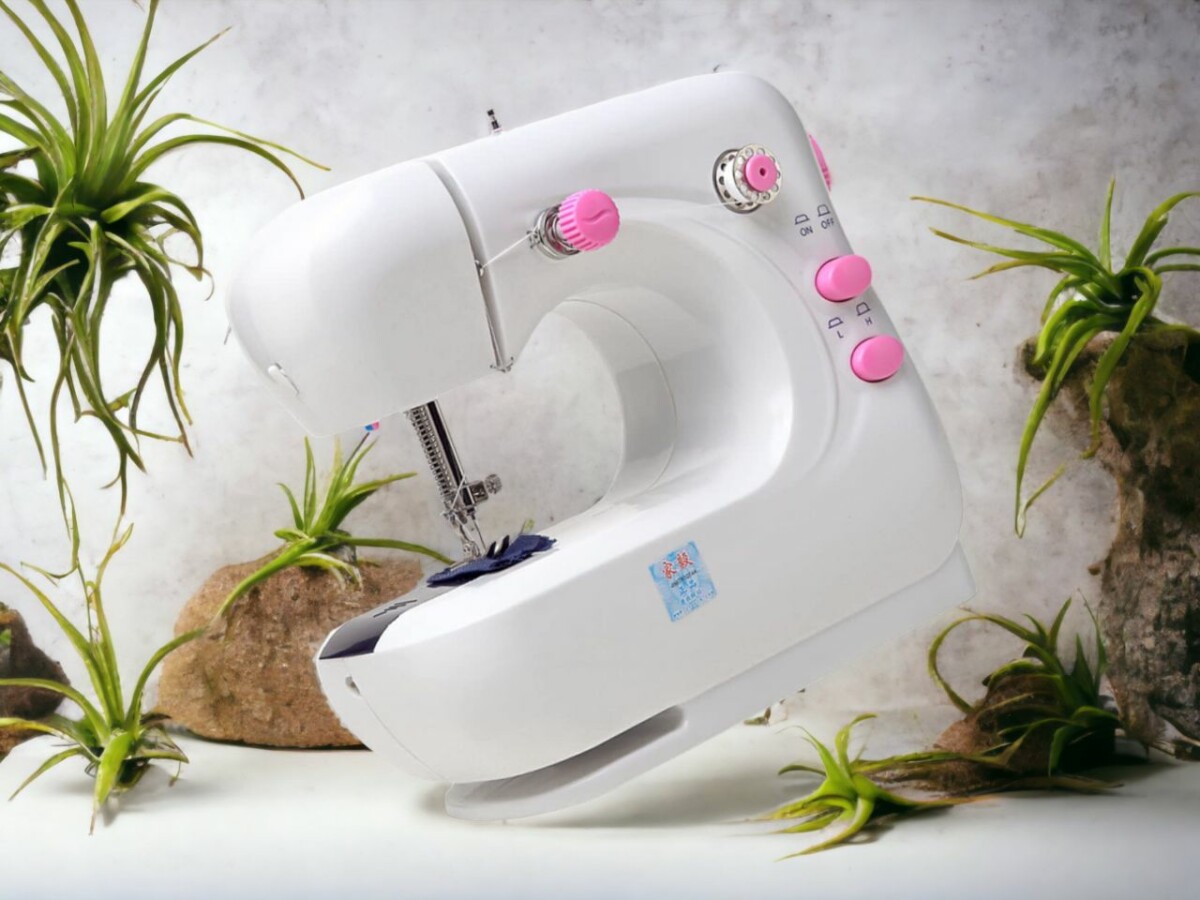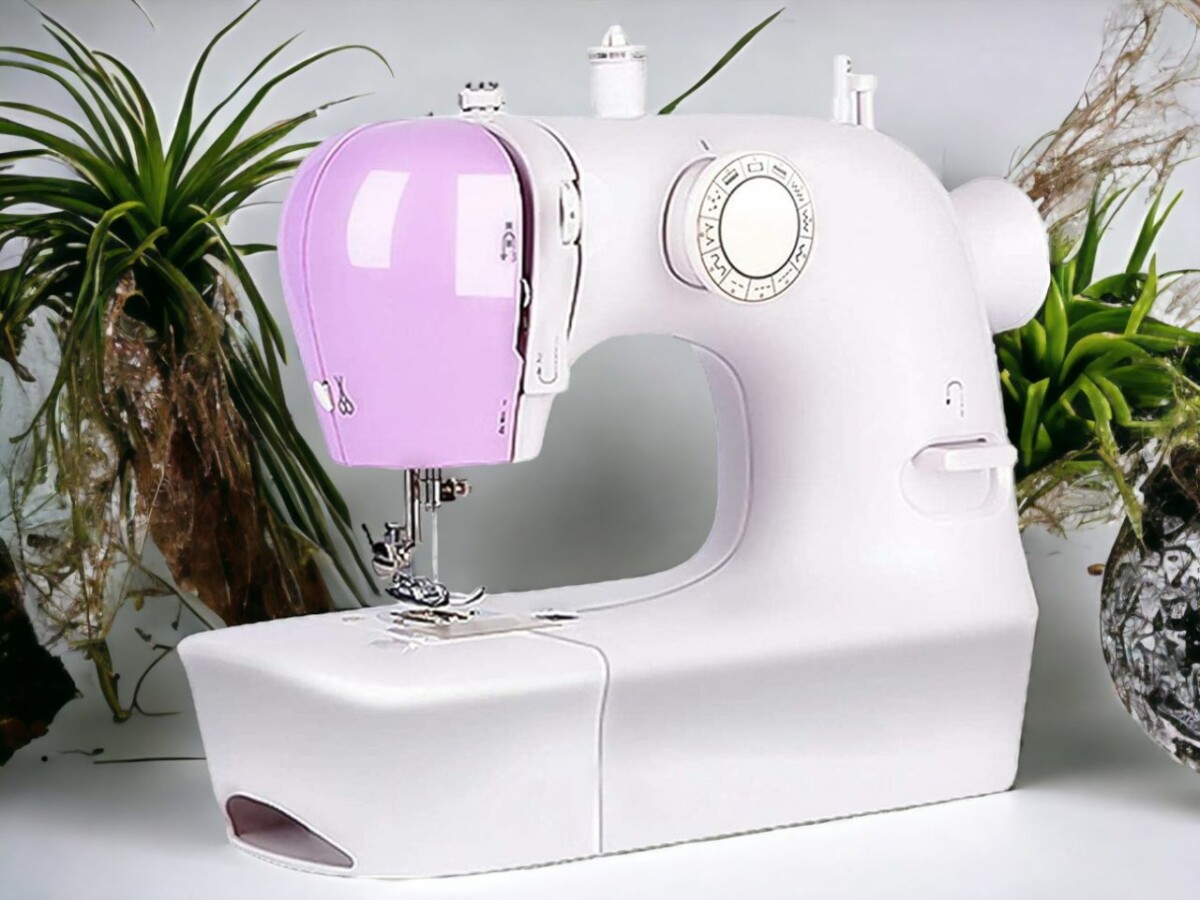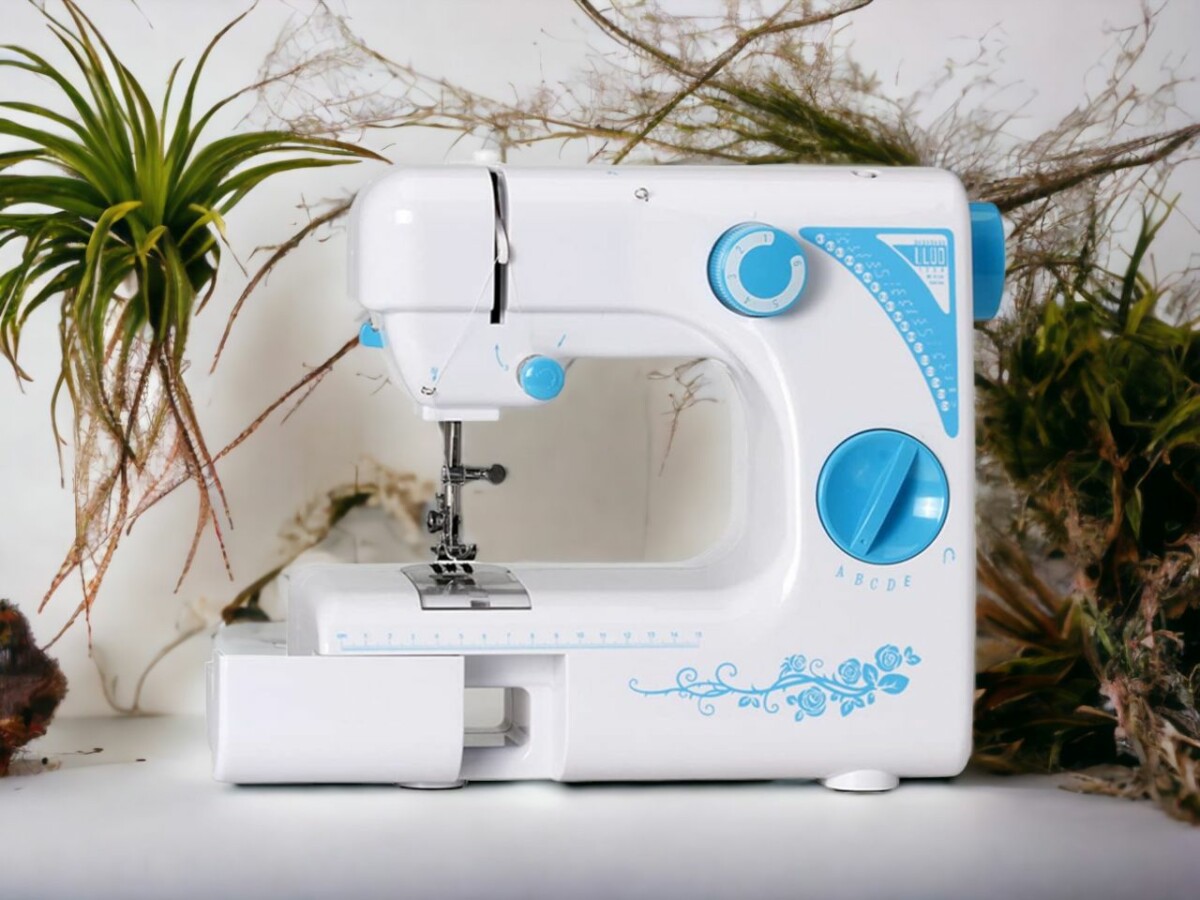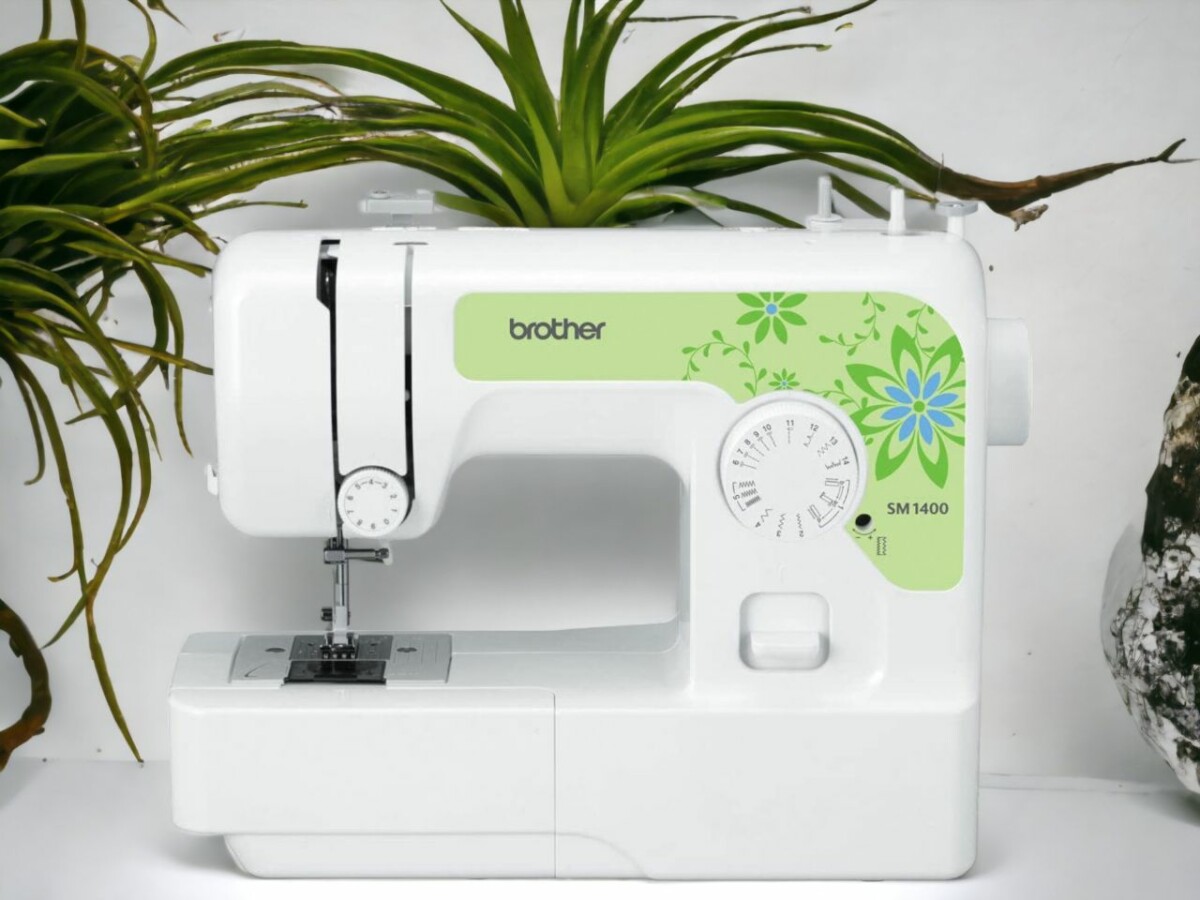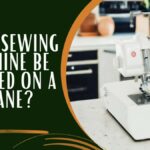So, you’re in the middle of crafting your latest masterpiece when suddenly your bobbin is nowhere to be found. Cue the dramatic music, right? But wait, can you actually continue sewing without that pesky little thing?
Let’s take a deep dive into this situation, why it matters, and if there are any machines out there that can save the day with their bobbin-less superpowers. Along the way, we’ll uncover some cool bobbin-less uses for your sewing machine and why it’s not usually the go-to method for those long-lasting, sturdy stitches.
Whether you’re just dipping your toes into the world of sewing or you’re a seasoned stitch master, this guide is here to help make sense of your bobbin troubles. Ready to get to the bottom of this? Let’s sew this problem up together.
Can a Sewing Machine Be Used Without A Bobbin?
No, without a bobbin, your sewing machine can’t create a lockstitch, normal stitch won’t be produced.
In your quest to master the ins and outs of sewing machines, it’s crucial to get a handle on the purpose of a bobbin. Basically, it’s like the VIP in your machine, holding the thread and playing a key role in making sure your stitches are on point.
Sure, there are machines like sergers and overlockers that don’t use a bobbin and instead, rely on a ‘looper’ to supply the thread. But honestly, a bobbin’s got them beat by a mile when it comes to advantages.
Without a bobbin, your stitches could end up being as loose as a goose, totally defeating the purpose. Picture this – the bobbin and needle are like a dream team, locking in the threads to create a stitch that’s as tight and durable as those skinny jeans you’ve been eyeing.
Those bobbin-free machines might seem like a quick fix for simple stuff, but they can’t match the level of precision and security a bobbin offers.
Bottom line – whether you’re just dipping your toes into the sewing world or you’re already a pro, knowing your way around a bobbin is as essential as your morning coffee. So, buckle up, because mastering the bobbin is a ride worth taking in the sewing game.
Types of Sewing Machines That Can Operate Without a Bobbin
Alright, let’s switch gears and dive into the world of sewing machines that don’t need a bobbin – I’m talking about sergers, overlockers, and chain stitch machines.
These bad boys use something called a ‘looper’ mechanism instead of a bobbin to get the thread under the fabric.
Wrap your head around that, and you’ve just unlocked a whole new universe of sewing potential.
Bobbin-less Sewing Machines
You may have the idea that all sewing machines are bobbin-obsessed, but there’s a plot twist! Some kinds like sergers and overlockers totally ditch the bobbin and do their own thing. These rebellious machines have a few tricks up their sleeve. They’re speedy, can handle burly fabrics like a champ, and aren’t as likely to throw a hissy fit with thread jams.
But hold up, solving problems with these bobbin-free machines can be like solving a Rubik’s cube blindfolded. Here’s what could go wrong:
- Messed-up thread tension results in stitches that are looser than a pair of worn-out jeans.
- If your needles go rogue and misalign, your machine might decide to go on strike and not stitch at all.
- The looper can be a drama queen, needing a replacement or adjustment due to wear and tear.
Sure, these machines have their cool points, but they’re not the first choice for newbies since they can be as complex as a ‘Game of Thrones’ plotline.
Looper Mechanism Exploration
Alright, let’s dive right into the nitty-gritty of the looper mechanism, shall we? If you’re wondering about machines that can sew without a bobbin, you’re in for a treat. Ever heard of Sergers, Overlockers, or Chain Stitch machines? Yeah, these bad boys don’t need a bobbin. They’re all about that looper mechanism life.
This mechanism basically takes care of feeding the thread to the underside of the fabric which then creates the stitches. It’s pretty neat, right? But don’t get it twisted, maintaining a looper mechanism isn’t a walk in the park. It’s essential to keep these machines in tip-top shape. Regular clean-ups and a bit of oiling can help you dodge most looper mechanism issues that can pop up.
But here’s the kicker, using these machines might cramp your style a bit. Unlike the machines that use bobbins, these ones only produce loose, unsecured stitches. So, while they’re great for tasks like marking lines, they fall short when it comes to regular sewing.
It all boils down to understanding your machine’s mechanism to make the most out of it. Sure, bobbin-less machines might sound cool, but knowing their limitations is key. So, before you go all in, make sure you’ve got all your bases covered.
Non-Stitching Uses of a Bobbin-less Sewing Machine
Did you know that your bobbin-less sewing machine is more than just a stitching tool? It’s a creative powerhouse that can help you do a bunch of cool stuff beyond sewing. You can make paper stencils for your art projects or even mark lines on fabric using powdered chalk. It’s like a secret weapon for crafting!
For example, ever thought about using your sewing machine to create your own arts and crafts templates? You can do that! Just use it to perforate paper and voila, you have a custom-made stencil.
There’s more. You can use your machine to mark fabric. Just run the fabric through without any thread, use some powdered chalk, and you’re all set. It’s an amazing way to draw precise lines or patterns on fabric.
And let’s not forget about paper stencils. They’re a game-changer for scrapbooking or card-making. Just put your paper under the needle and run your machine without thread. You’ll have a perfect stencil in no time.
Plus, if you’re just starting out with sewing, your bobbin-less machine can be a great practice buddy. Experiment with feeding fabric through your machine without actually stitching. It’s a superb way to boost your fabric handling skills without messing up any materials.
Why It’s Not Advisable to Sew Without a Bobbin
Sure, you can technically run a sewing machine without a bobbin, but that’s like trying to drive a car without an engine. You won’t get the secure, sturdy stitches that’ll last, and your hard work could just fall apart.
Think of the bobbin as the MVP of the whole stitching game, it links the top and bottom threads together to create these super tough stitches. Without it, you’re just left with these weak stitches chilling on top of the fabric, which are a no-go for any serious sewing endeavors.
Yeah, there are other players in the game, like sergers and overlockers that can roll without a bobbin, but they’re not as flexible or easy to get your hands on for most of us.
The perks of sticking with a bobbin definitely beat the ease of not having to refill or keep an eye on it. So, bottom line, always have a bobbin in the mix when you’re sewing to keep your work top-notch and built to last.
Vintage Sewing Machines and Bobbin Modifications
A bunch of old-school sewing machines need bobbin tweaks, and trust me, the types of stitches these babies can churn out is seriously mind-blowing. Fiddle around with these vintage gems, and you’re in for some surprises.
So, what’s the deal with sewing machines that don’t need bobbins, you ask?
- *Killer chain stitches*: Think machines like the Singer model from the groovy 60s or 70s. With a few bobbin case tweaks, it’s chain stitch heaven.
- *Stand-out serger stitches*: Overlockers, or as you might know them, sergers, ditch the bobbin for a looper, giving you a finish that’s unlike any other.
- *Bobbin-free zone*: Perfect for beginners to get the hang of feeding fabric without actually sewing stuff together.
Just a heads up though, playing around with vintage sewing machine mods isn’t for the faint-hearted. You’ve gotta have a solid understanding of sewing lingo and how machines work. But hey, with a little patience and a lot of practice, you’ll be stitching up a storm in no time.
A Closer Look at the Lock Stitch Process and Importance of Bobbins
Alright, let’s dive into the fascinating world of the lock stitch process, a feature that’s pretty standard in most sewing machines.
You might be wondering, ‘what’s the big deal with this?’ Well, here’s the lowdown: the bobbin, that little guy, is super crucial in this whole operation. It’s the unsung hero that works behind the scenes, aligning the needle thread and bobbin thread to make a solid, secure stitch.
Without it, your sewing machine might struggle a bit and give you stitches that are all loosey-goosey and not at all secure. Pretty lame, right?
So, that’s why the bobbin, small as it might be, is a total game-changer in sewing. It’s proof that size doesn’t always matter – it’s what you do that counts.
Lock Stitch Mechanism
Getting to grips with the lock stitch mechanism is all about recognizing how crucial bobbins are in nailing those secure, lasting stitches. Sure, you might stumble upon some bobbin-less tech when you’re hunting for fresh stitching methods, but let’s be real here, nothing truly rivals the trusty old lock stitch.
Here’s the deal:
- Picture it like this. You’ve got your top thread from the needle getting all tangled up with the bottom thread from the bobbin.
- Now, imagine this mess happening right inside the fabric. That’s what ‘locks’ the stitch securely in place.
- Without this lock, even a simple seam would fall apart easily.
The bottom line? If your sewing machine is bobbin-less, it’s not gonna give you that essential lock stitch. You might scrape by in some cases, but if you’re aiming for top-notch, durable seams, you’re gonna need that bobbin.
Importance of Bobbins
You might be thinking, ‘Who needs a bobbin, anyway?’ And I get it. It can be tempting to cut corners and try to sew without one. But here’s the thing: bobbins are pretty much the backbone of the whole lock stitch process.
Looking into bobbin-less options? That’s cool, but just bear in mind that they often can’t deliver the same kind of strength and finish that you’d get with a bobbin. Without one, the thread doesn’t lock right with the top thread, which can result in loose, sketchy stitches.
Bobbins are honestly the unsung MVPs of your sewing machine. They work side by side with the needle, helping you produce those perfect, uniform stitches we all strive for. Even if you’re trying out different methods, don’t underestimate the power of the humble bobbin.
Bobbin Alternatives and Limitations
As you delve into the world of bobbin alternatives, you’re likely to stumble upon a few options. But hold up, it’s key to be cognizant of the drawbacks these alternatives have, particularly in the context of lock stitch processes where bobbins play a crucial role.
Sergers and overlockers, for instance, ditch the bobbin and opt for a ‘looper’ instead. Kinda cool, right? And then you have some retro sewing machines that, with a few tweaks, can whip up both lock and chain stitches. Plus, there are even machines sans bobbin that are perfect for non-sewing tasks, like whipping up stencils or marking fabric with chalk.
But, here’s the kicker – machines without bobbins come with their own set of issues. They’re not exactly renowned for creating secure stitches, often resulting in loose, unsecured stitches that do nothing for your fabric. So, while bobbin alternatives are out there, their practical use in real sewing projects is kinda iffy.
Take Your Sewing Mastery to the Next Level
Alright folks, we’ve delved deep into whether you can use a sewing machine without a bobbin, and we ain’t stopping the textile talk there. There’s a lot more to unravel, or should I say ‘unthread’, in the sewing world.
Plenty of you have been buzzing me about using your sewing machine without certain parts. It’s intriguing to see how everyone likes to cut corners or how we all sometimes find ourselves caught in a twist with a crucial part missing. Just like working without a bobbin, some of you wonder if you can twirl up a storm on your sewing machine without a presser foot. The game’s always changing, and we’ve got all those queries covered.
Moving on, let’s slide into one of my personal favorite niches – quilting. Now, quilting ain’t just your grandma gig. It’s a true art form, no kidding. So you’ve got your sewing machine, and you’re wondering, “Can this thing quilt?”. You’d be surprised at how much diversity there is in stitching. We’ve uncovered the tricks and tips on transforming your simple sewing machine into a quilting master.
A lot of you adventurous souls have hand quilting thread in your kit and are probably staring at your machine, wondering if it can handle the heft. We’ve looked into this eccentric combo of hand quilting thread in a sewing machine to see if it’s a match made in fabric heaven or if it will create a thread disaster.
So let’s keep this thread of conversation going and continue exploring the vast universe of sewing together. Here’s to blurring the lines between craft and artistry. Keep those feed dogs fed, folks!
I have been in the embroidery field for over 10 years. My career first started when I was an apprentice to a local seamstress where I started to learn the basics of garment construction and alterations. That’s where I started to love sewing and began to hone my skills even more.


